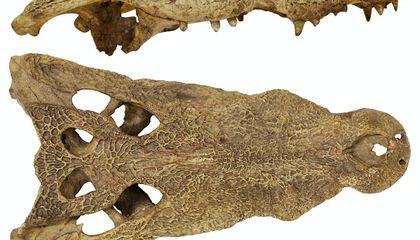Hello.
Hello.
This is mainly an account to use for @pnatsecretsanta. I don’t really use Tumblr all that much unless I’m lurking. It’s easier to find me on Discord or Reddit (pm me if you want that info, I guess.), but I might stick around if I feel like doing so later on.
More Posts from Gatortavern and Others
#lizard #Komodo Dragon





Komodo Dragon. Indonesian Islands of Komodo,Rinca,Flores and Gili Motang.1 of 3 venomous lizards on Earth.
Hot dang, this sounds super fun! Another one I used to do is freerice.com, where you do little grammar puzzles to donate rice to children in impoverished countries.
Cool Tip
If you are like me and always need to be working on something to keep your anxiety under control, during this quarentine why not helping scientists by looking at pictures of some neat penguins? or even galaxies? There’s this site call Zooniverse, where you can help on scientific projects by analyzing pictures and data! Right now my favorite project has returned, called Penguin Watch (where yeah, you get to watch penguins, it’s amazing)

you basically have to analyse photos looking for penguins, their chicks, eggs or even predators and human interaction But there are lots of interesting projects you can help in areas such as biology, physics, history or even art:








Oh and the best part, some institutions even accept it as volunteering/service hour requirements for graduation and scholarships!! It’s helping me a lot during this time, so I thought it was worth sharing

The (neuro)science of getting and staying motivated
There is no question that motivation is one of the hardest and yet important factors in life. It’s the difference between success and failure, goal-setting and aimlessness, well-being and unhappiness. And yet, why is it so hard to get motivated – or even if we do, to keep it up?
That is the question that scientists led by Professor Carmen Sandi at EPFL and Dr Gedi Luksys at the University of Edinburgh have sought to answer. The researchers worked off previous knowledge that told them two things: First, that people differ a lot in their capacity to engage in motivated behavior and that motivational problems like apathy are common in neurodegenerative and psychiatric disorders. Second, to target an area of the brain called the “nucleus accumbens”.
Sitting close to the bottom of brain, the nucleus accumbens has been the subject of a lot of research. The reason is that it was quickly found to be a major player in functions like aversion, reward, reinforcement, and motivation.
To test and quantify motivation, the EPFL team designed what is known as a “monetary incentive force task”. The idea is that participants perform a task with increasing – and measurable – effort and get paid sums of money that correspond to their effort. Basically, do more and get paid more.
In this study, 43 men were scanned to measure–metabolites in the nucleus accumbens in their brains with a sophisticated brain-imaging technique called “proton magnetic resonance spectroscopy”, or 1H-MRS. This can specifically measure the abundance of neurochemicals in the brain, such as neurotransmitters and metabolites. Because of this 1H-MRS is used even in clinical settings to determine neurological disorders.
Subsequently, each participant was asked to squeeze a device that measures force – a dynamometer – to a given level of contraction in order to earn either 0.2, 0.5, or 1 Swiss franc. This procedure was repeated for a number of 120 consecutive trials, which made performance in the task quite demanding.
The idea of the experiment was that the different sums would push participants to decide if they were going to invest energy and perform the task accordingly at each trial. The scientists also ran the experiment under isolation and group conditions to investigate the influence of competition on performance.
Once they had gathered the behavioral data, the researchers processed it through a computational model that estimated the most appropriate parameters that should be measured with regard to utility, effort, and performance functions. This allowed them to interrogate whether particular neurotransmitter levels predicted specific motivational functions.
The analysis revealed that the key to performance – and, by extension, motivation – lies within the ratio of two neurotransmitters in the nucleus accumbens: glutamine and glutamate. Specifically, the ratio of glutamine to glutamate relates to our capacity for maintaining performance over a long period of time – what the researchers term “stamina”.
Another discovery was that competition seems to boost performance even from the beginning of the task. This was especially the case for individuals with low glutamine-to-glutamate ratios in the nucleus accumbens.
“The findings provide novel insights in the field of motivation neuroscience,” says Carmen Sandi. “They show that the balance between glutamine and glutamate can help predict specific, computational components of motivated performance. Our approach and data can also help us develop therapeutic strategies, including nutritional interventions, that address deficits in effort engagement by targeting metabolism.”
This is so rad! And the person that reblogs these also makes sure that every artist is credited so you can check them out! Props to both!

Two-headed Dragon with a Skull, ink on paper by Zhyreb
This artist on Instagram
#crocodiles #cool shit!
New Evidence Suggests Ancient Crocodiles Swam From Africa to America
https://sciencespies.com/news/new-evidence-suggests-ancient-crocodiles-swam-from-africa-to-america/
New Evidence Suggests Ancient Crocodiles Swam From Africa to America

Most American crocodiles don’t need to look far to find the feature that sets them apart from Nile crocodiles. The difference lies right between their eyes and their nostrils. Of crocodiles living today, only the four crocodile species that live in the Americas have a small bump in the middle of their snouts.
But about seven million years ago, a ten-foot-long crocodile living in what’s now Libya had the same tell-tale lump, according to research published in Scientific Reports last week. A fossil skull of the extinct Crocodylus checchiai provides more evidence that crocodiles spread across the world by migrating from Australia, through Africa and finally to South America.
The fossil “fills a gap between the Nile crocodile in Africa and the four extant American species,” University of Turin paleoherpetologist Massimo Delfino says to Science News’ Carolyn Wilke.
The fact that crocodiles live on both sides of the Atlantic Ocean has long puzzled biologists trying to figure out which direction the giant reptiles migrated. Genetic research in 2011 provided molecular evidence that crocodiles migrated from Africa to the Americas, but fossil evidence was scant.
“The main problem for palaeobiologists is the rarity and fragmentary nature of fossil remains,” Delfino and co-author David Iurino told the Agence France-Presse by email.




The seven million-year-old Crocodylus checchiai skull was first collected in 1939.
(Image by Bruno Mercurio)
The fossil described in the new paper is one of four that were first described in the 1930s. Three that were stored in the Natural History Museum in Tripoli, Libya, were lost or destroyed during World War II, according to the Scientific Reports paper. But the researchers found the fourth skull, originally collected in 1939, stored in the Sapienza University of Rome.
“This fossil is twice-old,” Delfino tells Nina Pullano at Inverse, referencing the fact that the skull is millions of years old and had then been forgotten for decades.The researchers used CT scanning to create a 3D model of the inside and outside of the skull for closer study and confirmed the presence of the American crocodile-like snout bump.
At seven million years old, the C. checchiai skull predates all known crocodile fossils in America, the oldest of which are about five million years old, Lucy Hicks reports for Science magazine. That means that the timeline checks out: it’s possible that C. checchiai may have made their way from Libya to the western coast of Africa, swam across the Atlantic and landed on the shores of South America.
The continents were about the same distance apart seven million years ago as they are today, making the journey across the ocean quite a feat—but not impossible. The researchers point out in a statement that the Australian marine crocodile has been recorded travelling more than 300 miles in a day. The prehistoric croc may have also bobbed along on one of the ocean’s surface currents that travel west from Africa to the Americas.
Crocodiles are also not the only flightless animal thought to have reached the New World by crossing the Atlantic. As the Inverse reports, a study published in April suggests that on two instances, monkeys made their way across the ocean on floating vegetation.
“If you think that the monkey can cross the Atlantic Ocean, very probably it’s much easier to accept that the crocodile can do it,” Delfino tells Inverse. Ancient crocodiles had the specialized glands necessary to swim and survive in saltwater and may have snacked on sea turtles along the way.
As a changing climate wiped out local species, crocodiles were well adapted to the late-Miocene environment and replaced them, the researchers write in the paper. The original crew of ocean-crossing crocs may have included many individuals or at least one pregnant female, Science News reports.
And after situating themselves in South America, they evolved and diversified into the four species found in the Americas today. (Only the American crocodile and American alligator are found in the United States.)
But whether or not the crocodilians mourn their C. checchiai ancestors is hard to tell—they might just be crocodile tears, after all.
#News
Another fun fact: crocodiles and alligators will climb surfaces. If you go to a reptile zoo and see the metal mesh curve upwards, that's because the crocs and gators would otherwise be able to climb right up the mesh and get out. They can also use their massive tail to propel themselves out of the water like really slow death missiles.
They're amazing creatures.
Crocodiles swim way faster than you think.
(Footage taken from Queensland Australia)
I'M DOING AN EXPERIMENT
To prove something to a friend, please
REBLOG IF YOU THINK ASEXUALS BELONG IN LGBTQ+ SPACES
LIKE IF YOU THINK ASEXUALS DON’T BELONG IN LGBTQ+ SPACES

If you can’t reblog this, unfollow me now.

1918 Two women sharpening an axe. From My Vintage Dreams, FB.
-
 cheezbot liked this · 5 years ago
cheezbot liked this · 5 years ago -
 gatortavern reblogged this · 5 years ago
gatortavern reblogged this · 5 years ago

A Cozy Cabana for Crocodiles, Alligators and their ancestors. -fan of the webcomic Paranatural, Pokemon, Hideo Kojima titles -updates/posts infrequently
237 posts
